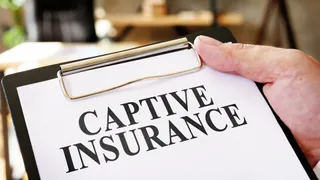Articles
Refine Search
news
The unit will deliver tailored facultative and structured reinsurance solutions. 19 December 2025
news
It is waiting on the final UK captive regulations. 19 December 2025
news
The role covers fronting/captive underwriting for the DACH countries. 19 December 2025
news
The Bermuda re/insurer covers a number of captives. 18 December 2025
news
AM Best has affirmed the financial strength rating of the entities. 18 December 2025
news
The executive has 25 years of expertise in employee benefits consulting. 17 December 2025
news
The captive reinsurer is related to a conglomerate in Latin America. 17 December 2025
news
Sky is a Barbados-domiciled single-parent captive reinsurer. 17 December 2025
news
Nominations are now open to recognise rising stars. 16 December 2025
Not finding what you're looking for, please try resetting your applied search and filters,
or try the full site search.




